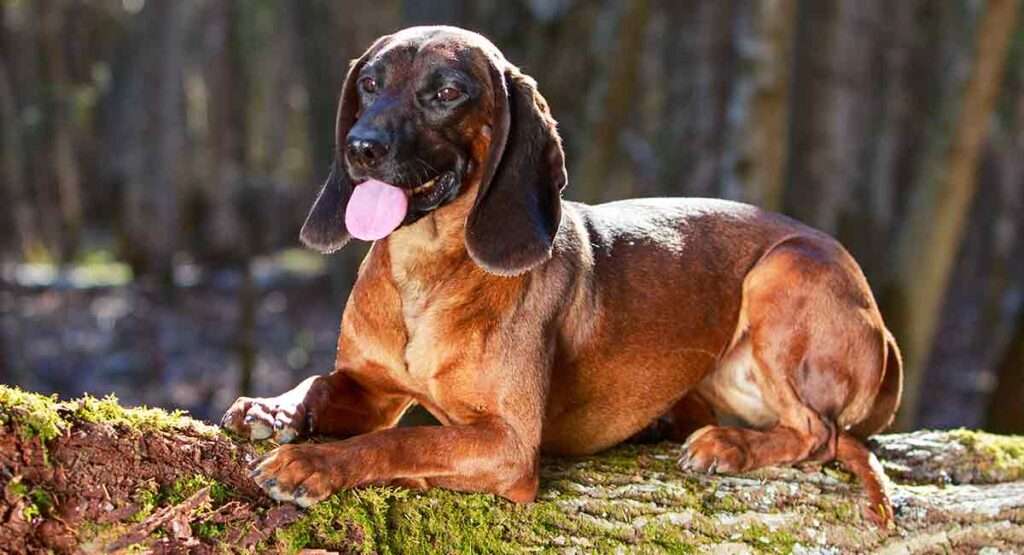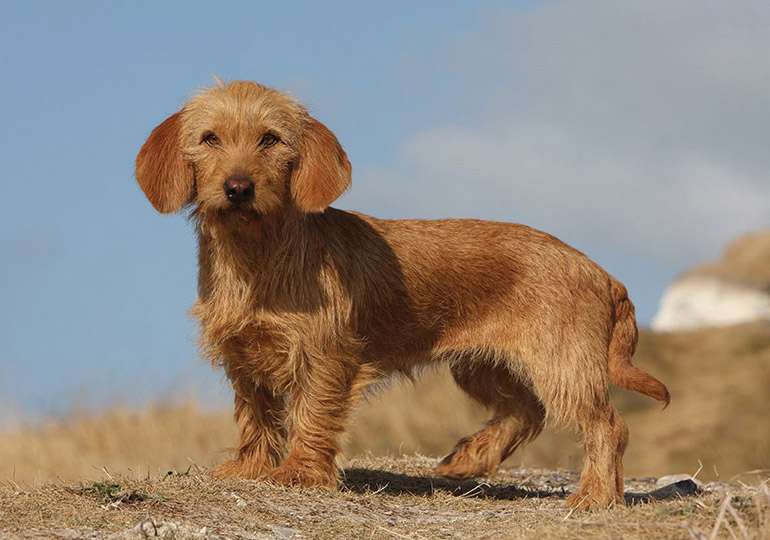
Germany is home to the Bavarian Mountain Hound dog breed. It has been employed in Germany as a scent hound to track down wounded wildlife since the early 20th century.
Physical Characteristics
The head of this dog is powerful and long. The skull has a broad profile and a small dome. Its nasal bridge is slightly bent and has a noticeable stop. It has a large muzzle, strong jaws, and lips that completely enclose the mouth. Wide nostrils and a black or dark red nose characterize it. It has medium-length, high-set ears. The weight range of Bavarian Mountain Hounds is 20–25 kg. Short, thick, lustrous, and incredibly flat on the body, the coat is also quite rough. On the head and ears, it is finer, while on the abdomen, legs, and tail, it is harsher and longer. Its coat can be any shade of brindle or black-masked fawn.
Care as a Pet/ In Captivity

Diet
They adore Primal Freeze, Dried Nuggets, Orijen Original Dry Dog Food, American Journey Lamb and Sweet Potato Recipe, and American Journey Limited Ingredients. The coat needs only occasional Mitt wiping and light brushing to maintain glossy, healthy fur. With a soft cloth dipped in an ear-cleansing solution, clean their ears.
Exercise
The Bavarian Mountain Hound is best suited for living in a more rural environment and enjoys using its wits and fitness for hunting. When bored, they can be crafty, jumping fences or digging holes underneath them. Bavarian Mountain Hounds make terrific companions if you can keep them adequately exercised and mentally active, despite the fact that the majority are owned and employed by professional hunters.
Training
The Bavarian Mountain Hound needs proper and early training because it is an intelligent and active breed that needs daily mental and physical stimulation. These dogs become bored when untrained and without the right activity, which frequently results in destructive habits.
Table





